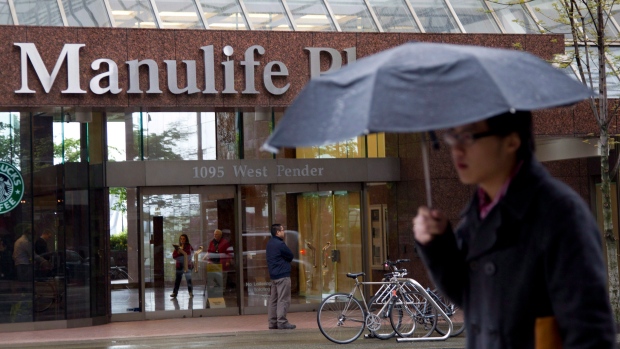May 5, 2016
Manulife seeks new Asia deals as region helps boost earnings 14%
, Reuters

Manulife (MFC.TO), Canada’s biggest life insurer, said it would continue to look for new partners in Asia after strong sales in the region helped it increase its core earnings by 14 per cent in the first quarter.
The activation of a bancassurance partnership with DBS in Singapore and Hong Kong helped Manulife’s Asian unit push total insurance sales up by 14 per cent to $954-million, more than making up for another quarter of lacklustre investment gains.
“We’re experiencing very strong growth in many Asian markets. That was partly driven by our new bancassurance distribution agreement with DBS. We’ve done a number of smaller deals as well and we will continue to look for suitable partners in that way,” said Chief Financial Officer Steve Roder.
Manulife agreed to pay $1.2-billion (U.S.) to Singapore’s DBS Group Holdings last April for a 15-year partnership that will let the insurer sell products through the lender’s Asian branch network in what is known as the “bancassurance” model.
Strong Asian growth helped Manulife’s core earnings to rise nearly 14 per cent to $905-million (Canadian), or 44 cents per share, beating analysts average estimate by 1 cent, according to Thomson Reuters I/B/E/S.
Like other insurance companies, Manulife has been attracted to Asia by the region’s burgeoning middle class.
“What we’re seeing in Asia is this rapid emergence of a middle class. That’s a big, big driver,” Roder said in an interview.
Roder said sales in Singapore were up over 500 per cent on the year before while Japan saw very strong growth and emerging markets such as Vietnam and the Philippines saw growth of over 50 per cent year-on-year.
Seventy per cent of Manulife’s insurance premiums are now from Asia and Roder said he expected that to keep increasing.
Manulife has a presence in every Asian country except South Korea and India and Roder said it had no need to enter those markets.
The insurer said in February it would be difficult to achieve its core earnings target of $4-billion in 2016, with the weak oil price hitting the value of its investments in the energy sector.
However, Roder said the price of assets being sold indicated people don’t believe the current price of oil is here to stay.
“We do believe that the worst of this is behind us and the rest of the industry,” Roder said.
Assets under management and administration were $904-billion at the end of March, down from $935-billion at the end of December, primarily due to the strengthening Canadian dollar.




